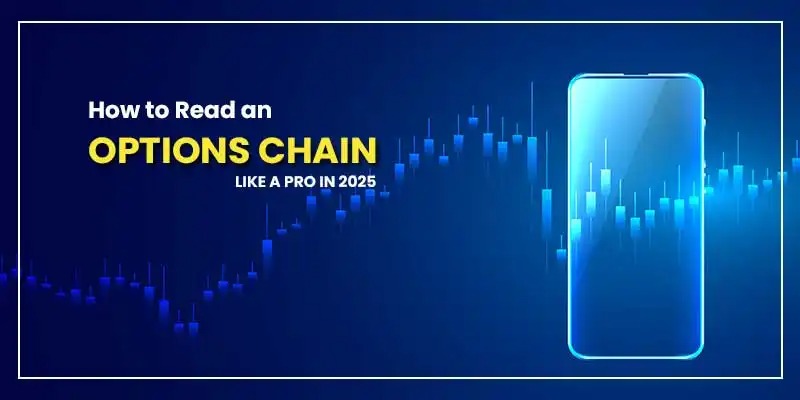In 2025, options chains are still essential for investors who want to navigate the complex data available in options trading. With an options chain, you can see all the options contracts offered for a particular base asset. This guide focuses on practical steps and clear explanations that compliance discourages any implied guarantee of speed or ease.
Contents
- What Is an Options Chain
- Key Components of an Options Chain
- How to Interpret an Options Chain
- Identify the Underlying Asset and Expiry Date
- Examine the Strike Prices
- Analyze the Premiums (Bid and Ask)
- Consider Volume and Open Interest
- Evaluate Implied Volatility
- Conclusion
- FAQs
What Is an Options Chain
An options chain shows all the call and put options for a particular asset, along with necessary information like strike prices, fees, expiry dates, etc. It shows how the market thinks the price of the base object might change shortly. Investors can spot trends, gauge the market’s mood, and improve their tactics by learning how to read an options chain.
Read Also: How To Read An Options Chain: A Guide For Indian Investors
Key Components of an Options Chain
It is essential to understand the main parts of an options chain. These are the essential parts:
- Strike Price: The fixed price at which you can buy or sell the underlying object.
- Expiration Date: The end date of the options contract.
- Premium (Bid/Ask): The value for which the options contract is trading. The bid price shows the most a buyer is willing to pay, and the ask price shows the least a seller is willing to take.
- Volume: This is the number of contracts sold during a specific period. Liquidity is higher when traffic is higher.
- Open Interest: It is the total number of unfinished business contracts. This number can help you figure out how the market feels.
- Implied Volatility: A measure of how the market thinks the price of a base object will likely change.
How to Interpret an Options Chain
Pay attention to these steps to read an options chain like a pro:
Identify the Underlying Asset and Expiry Date:
Start by picking out the object and the date it expires. Usually, expiry dates separate the parts of an options chain, so you can pick the period that works best for your trading strategy. Long-term options may provide more flexibility in strategy, while short-term options may involve higher price sensitivity.
Examine the Strike Prices:
Look over the strike prices that are out there. You can see the difference in price between options that are in the money, at the money, and out of the money by sorting these in ascending or descending order. Knowing where the market price stands right now about these strikes is essential.
Analyze the Premiums (Bid and Ask):
Check out both the bid and ask prices to understand how much the options cost and how much they might earn. The asking price is what sellers want to get, and the bid price is what buyers are willing to pay. The spread is the difference between these two numbers. It can tell you about how open a market is and how much it might cost to buy or sell something.
Consider Volume and Open Interest:
Volume and open interest are significant for determining strong and long-lasting market trends. A high volume may signify busy trading and a positive market mood. On the other hand, rising open interest can mean that more traders are keeping positions, which could support a trend.
Read Also: The Mechanics Of Options Settlement
Evaluate Implied Volatility:
Implied volatility is one of the most critical factors affecting option prices. When implied volatility is high, premiums tend to be higher because the market expects bigger price changes. Implied volatility may reflect market expectations of possible price movements, but it does not guarantee future performance.
Conclusion
To become good at reading an options chain in 2025, you need to know everything about it. By paying attention to these critical factors and using reliable analysis tools and technical indicators, you can better understand how the market is feeling and make your trading methods work better. This guide has introduced essential aspects of options chains to help traders make informed decisions. Please consult with a financial advisor before trading in options.
Disclaimer: Trading in options involves significant risk and is not suitable for all investors. Please read and understand the Risk Disclosure Documents and consult with your financial advisor before investing. Past performance is not indicative of future results. No content in this article should be construed as a promise, guarantee, or forecast of future returns.
FAQs
Open interest shows how many contracts remain open and helps traders guess how prices will move.
Combining basic signs with data from the options chain can help you confirm market trends and make better decisions.
Not all sites show implied volatility; you may need to use complex tools or pay for paid services to get to this information.

